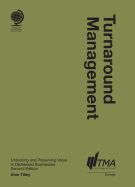Misconceptions and reality of investing in European distressed debt
12 April 2016

Author bio coming soon
In our latest blog, author Ignacio Buil Aldana, partner at Cuatrecasas and consulting editor of our forthcoming title on Investing in Distressed Debt in Europe, discusses the investment opportunity for investing in European distressed debt.
Does European distressed debt represent a compelling investment opportunity for investors? Since the start of the financial crisis in 2007 this has been a recurrent question with no consensus among investors as to which answer is the correct one. Still today, despite the many examples of successful distressed transactions in Europe, many of these investors still are reluctant to answer with a firm “yes” when being asked this question.
There are in our view two key misconceptions when approaching European distressed debt which are framed as follows: (i) European banks do not sell NPLs and when they do they do not sell at distressed prices, and (ii) the European restructuring legal framework is not creditor-friendly and does not allow for the implementation of successful restructurings making liquidation the only possible outcome.
Despite the fact that we can appreciate that these concerns may have been applicable pre-2007 crisis we believe that at the present time these do not longer apply, or at least their weight has been substantially reduced.
The deleveraging process by European banks
PricewaterhouseCoopers has reported that during 2015 a total of around €140bn of portfolio transactions were completed, an increase of around 50% on 2014 volumes. This makes 2015 the strongest year ever for portfolio transactions in Europe. While in 2010 non-core asset sales amounted to only €15bn, the 2015 figures show the dramatic increase in non-core asset sales during the last 5 years.
Therefore, European banks have, albeit slowly, been cleaning their balance sheets during the last years and are undergoing a true deleveraging process which has resulted in a dramatic increase of asset disposals. Moreover, capital injections by European governments into banks (U.K., Ireland, Germany or Spain, among others) have allowed these same banks to provision (write-off) distressed loans and sell these loans in the secondary market. It is true, that not all European countries have seen the same level of activity in the NPL market, but the process of provisioning and disposing of distressed loans has become a major focus by many European banks and, therefore, will allow distressed investors to continue finding investing opportunities in the short and medium term throughout Europe.
The reform of European insolvency and restructuring legislations
Despite the fragmentation and disparities in the national insolvency and restructuring law throughout Europe, a common trend of upgrade of these legislations has taken place across Europe. Germany, France, Italy or Spain have seen their legislations amended with the introduction of new restructuring tools to enhance out-of-court and in-court restructurings. New restructuring proceedings have been put in place in order to facilitate restructuring deals out-of-court and allow for the cram-down of holdouts. Moreover, in some jurisdictions the cram-down of equity has also been provided in those instances where shareholders are out of the money. This development has allowed the successful implementation of restructurings through debt-to-equity swap deals.
Further, a body of case law has been developed clarifying certain aspects of these new legislations and providing more predictability to investors than the one they had some years ago. The above, coupled with a growing community of restructuring specialists (lawyers, financial advisers or turnaround professionals), has made restructuring process more efficient and effective.
Whilst an harmonized European insolvency and restructuring regime would help to increase the efficiency of the European system regarding insolvency and restructuring proceedings, and acknowledging that there is still room for maneuver when it comes to reforms (valuation framework, role of creditors, debtor-in-possession financing, among others) the efforts made up to date by the different European countries to develop a “restructuring friendly” legislation should be praised and not overlooked by the distressed investor.
Ignacio Buil Aldana, restructuring lawer and Partner at the London office of the Spanish law firm Cuatrecasas, Gonçalves Pereira, is the consulting editor of the forthcoming publication “Investing in Distressed Debt in Europe: The TMA Handbook for Practitioners” which provides an overview of the European distressed debt market, covering debt trading, non-performing loans, direct lending, restructuring and workouts. The publication analyses these topics and others from a pan-European point of view, and is intended as a practical guide for anyone seeking a better understanding of the commercial and legal complexities involved in a highly fragmented market where different jurisdictions, legislative frameworks and market practices apply.
Click here for further details and a free sample chapter of our new title: 'Investing in Distressed Debt in Europe'













Any comments - send us an email